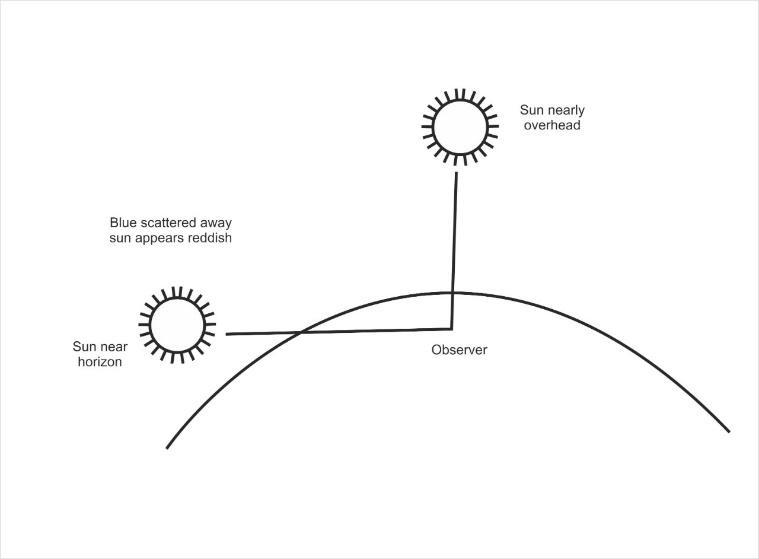
Draw a labelled diagram to show the reddish appearance of sun at sunrise and sunset.
Answer
470.4k+ views
Hint: In this question, the concept of the refraction of the light depends on the wavelength and different colors have different wavelengths. Use this concept to draw the diagram of the sun during noon and during sunrise and sunset. Then discuss the scattering phenomenon and the role of shorter and longer wavelengths behind the reddish appearance.
Complete step by step answer:
Consider the following diagram of the reddish appearance of sun at sunrise and sunset,

As we know that, the sun generally appears to be white at noon. But at the time of sunrise and sunset it becomes reddish. The main reason behind such appearance is scattering of light. There are various molecules of air and many fine particles are present in the atmosphere. During sunrise and sunset the sun reaches the horizon. So sunlight has to come a longer distance. In longer distance travel the blue light having less wavelength gets scattered in the atmosphere. So, the blue light cannot reach the observers. But as red light has higher wavelength so it gets less scattered in the atmosphere and reaches our eyes. This is the reason that at sunrise and sunset the sky appears to be reddish.
Note: As we know that the blue color light has shorter wavelength, with wavelengths between about 450 and 495 nanometers, so it gets scattered. On the other hand, red color light has longer wavelength, with wavelengths about 620 to 750 nanometers, so it is scattered less as compared to blue color light.
Complete step by step answer:
Consider the following diagram of the reddish appearance of sun at sunrise and sunset,

As we know that, the sun generally appears to be white at noon. But at the time of sunrise and sunset it becomes reddish. The main reason behind such appearance is scattering of light. There are various molecules of air and many fine particles are present in the atmosphere. During sunrise and sunset the sun reaches the horizon. So sunlight has to come a longer distance. In longer distance travel the blue light having less wavelength gets scattered in the atmosphere. So, the blue light cannot reach the observers. But as red light has higher wavelength so it gets less scattered in the atmosphere and reaches our eyes. This is the reason that at sunrise and sunset the sky appears to be reddish.
Note: As we know that the blue color light has shorter wavelength, with wavelengths between about 450 and 495 nanometers, so it gets scattered. On the other hand, red color light has longer wavelength, with wavelengths about 620 to 750 nanometers, so it is scattered less as compared to blue color light.
Recently Updated Pages
What percentage of the area in India is covered by class 10 social science CBSE

The area of a 6m wide road outside a garden in all class 10 maths CBSE

What is the electric flux through a cube of side 1 class 10 physics CBSE

If one root of x2 x k 0 maybe the square of the other class 10 maths CBSE

The radius and height of a cylinder are in the ratio class 10 maths CBSE

An almirah is sold for 5400 Rs after allowing a discount class 10 maths CBSE

Trending doubts
Write an application to the principal requesting five class 10 english CBSE

Difference between mass and weight class 10 physics CBSE

What is Commercial Farming ? What are its types ? Explain them with Examples

What are five examples of facts and opinions class 10 english CBSE

Which state has the longest coastline in India A Tamil class 10 social science CBSE

10 examples of evaporation in daily life with explanations




